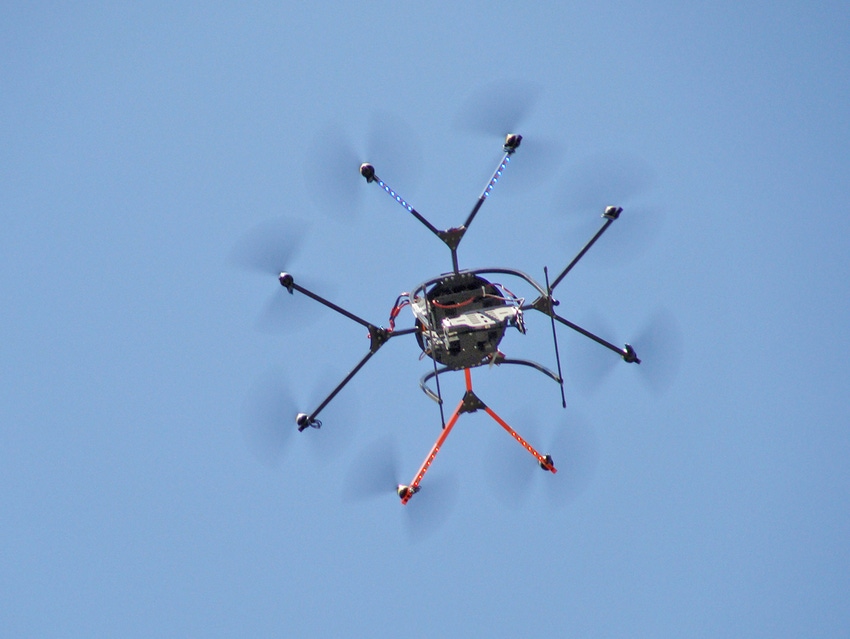
Unmanned aircraft (drones) can offer significant advantages to farmers and consultants, who see the new technology as a potential aid to crop scouting, mapping, and analysis of various in-field systems and applications.
They also may prove useful educational tools for Extension and research scientists, says Scott Graham, University of Tennessee, Jackson, who, along with fellow UT Jackson Extension specialists Scott Stewart and Heather Kelly, and Jeremy Green, Clemson University, has looked at ways these airborne tools can be used to benefit clients.
Graham presented their findings at the Crop Consultants Conference at the annual Beltwide Cotton Conferences in New Orleans.
For the latest on southwest agriculture, please check out Southwest Farm Press Daily and receive the latest news right to your inbox.
“We can use these devices to show the scope and scale of research,” he says. “We can show how we collect data from research plots, how we harvest; we can present differences between varieties from a bird’s eye view.” Varieties that are susceptible to a particular disease, pest, or environmental condition show up on videos shot as the drone flies over plots. They also can be used to make stand assessments and establish or check prescription/precision applications.
“We can also use drones to make an impression,” Graham said, showing a video of a drone flying over cotton plots with herbicide-tolerant and susceptible varieties. “We can create a virtual field day, and show crop changes from planting through harvest. We can show seasonal changes and different aspects of a crop.”
AN AFFORDABLE TOOL
He says many available UAVs aren’t a burdensome expense. “Drones cost from as little as $150 to you-can’t-afford-it,” he says. “But for $900 to $1,100 you can get a useful tool.” Adding a small camera and software makes the data and videos accessible.
The units also may use spectral sensing and normalized difference vegetation index (NDVI) to monitor crop health in season.
The technology comes with restrictions and challenges — training to use the systems takes time and expense, and users do assume some liability.
Graham showed videos of skilled operators launching and landing drones with almost perfect precision, and flying prescribed courses over fields. He also showed them, in less skilled hands, crashing into pickup trucks, trees and crops, and chasing a technician.
“It takes practice to operate a drone safely,” he says. “Things can go wrong; you will need spare blades and extra batteries. Safety is important — these things can hurt people.”
Operators must be aware of wind speed and possible obstructions, he says. “There are also privacy issues — you can’t fly over private property.”
Registration with the Federal Aviation Administration is also required to operate a drone.
About the Author(s)
You May Also Like






